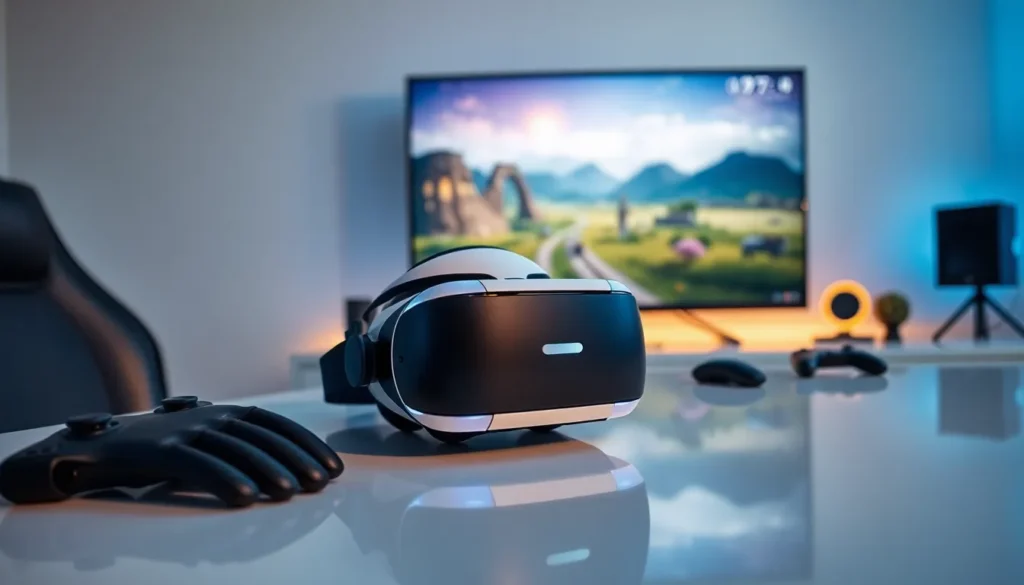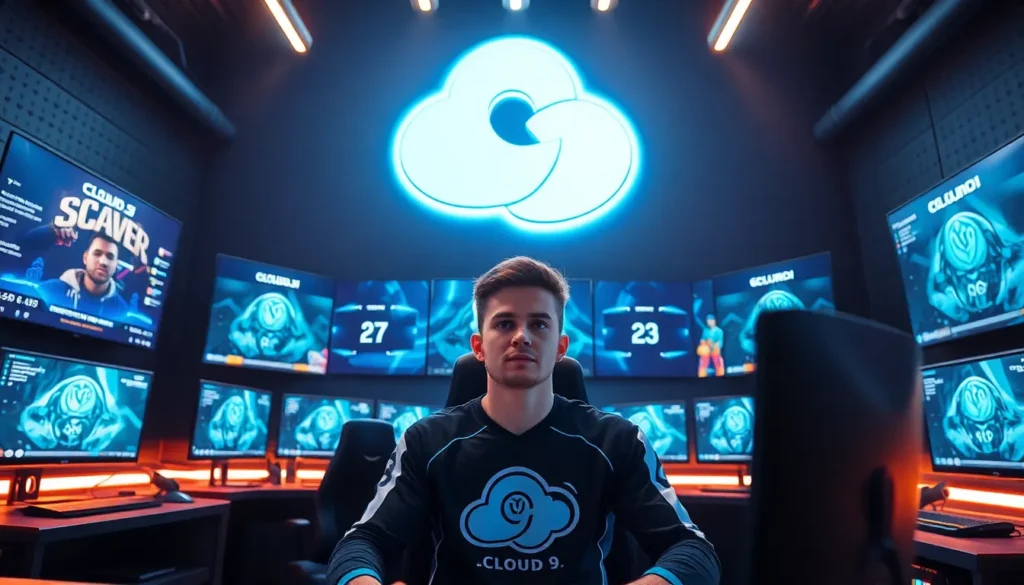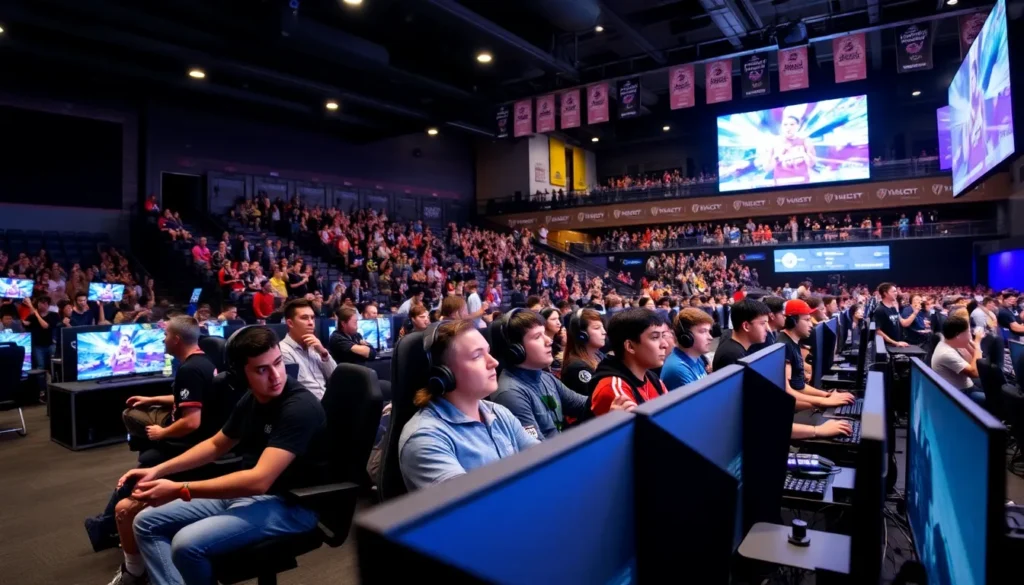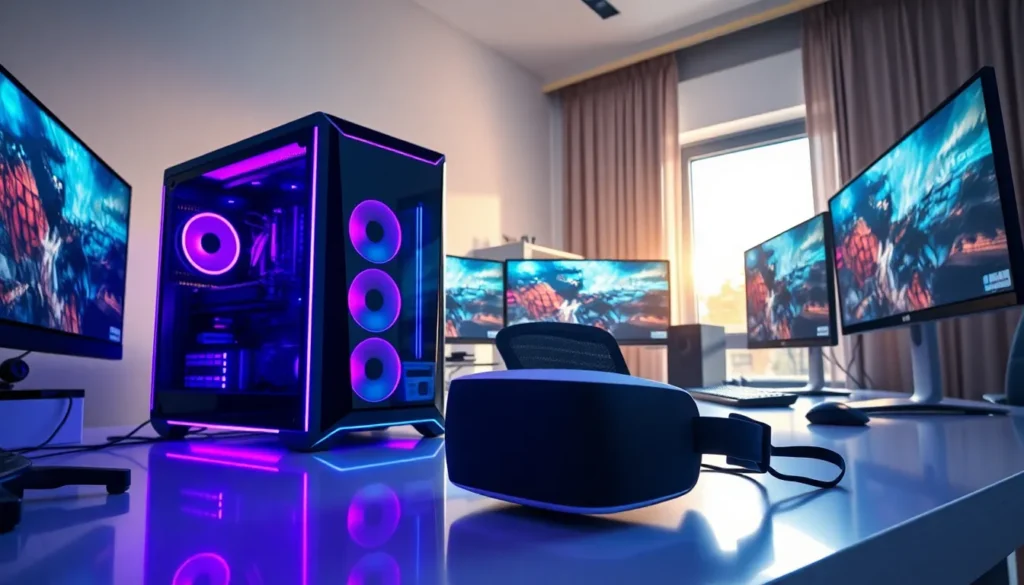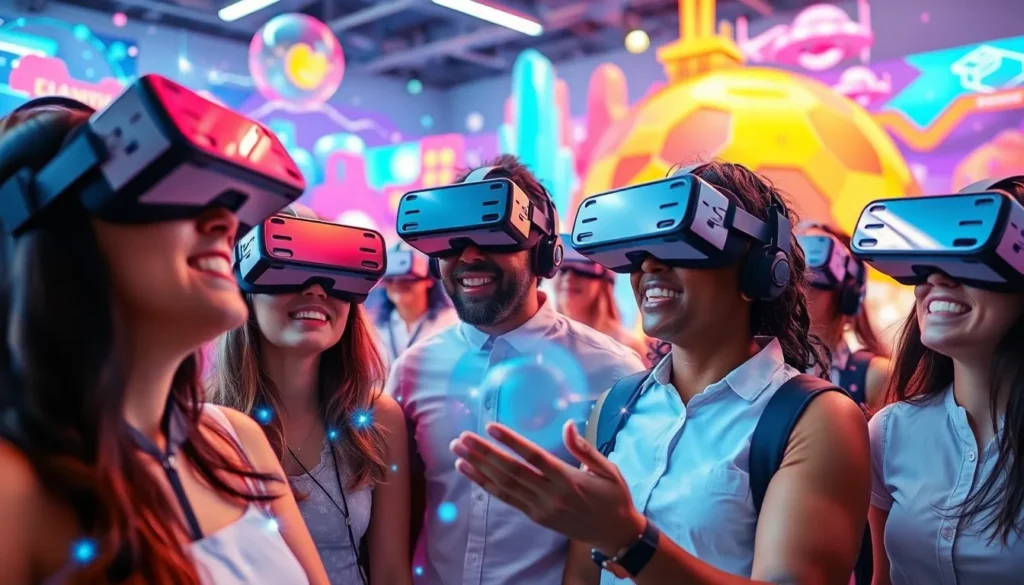Table of Contents
ToggleVirtual reality has taken the world by storm, transforming the way people interact with digital spaces. Imagine stepping into a world where the only limit is your imagination. VR interactive environments are not just for gamers anymore; they’re reshaping education, training, and even social interaction.
Overview of VR Interactive Environments
VR interactive environments create immersive experiences that engage users in real-time. These spaces incorporate 3D visuals and audio, enhancing the sense of presence. Users navigate these environments using controllers or body movements, enabling intuitive interaction.
Even in education, VR interactive environments foster active learning. Students explore historical events or complex scientific concepts in simulated settings. In addition, training programs use VR to simulate real-world scenarios, preparing individuals for high-pressure situations without real-life consequences.
Social interaction thrives within VR, as users can meet and communicate in virtual spaces. These environments support multiplayer experiences, allowing collaboration among users worldwide. Businesses hold virtual meetings in customized settings, enhancing remote work dynamics.
Entertainment also benefits from these engaging environments. Game developers design intricate worlds, filled with challenges and quests that captivate players. Meanwhile, artists and creators leverage VR to develop interactive art installations that involve the audience in novel ways.
Establishing VR interactive environments requires advanced technology, including powerful graphics processing units and motion tracking systems. Development teams use software tools such as Unity and Unreal Engine to create sophisticated scenarios and interactions. These tools enable rapid prototyping, facilitating innovative design processes.
The application of VR extends beyond entertainment and education. Healthcare professionals utilize VR for exposure therapy, helping patients confront fears in a controlled manner. Similarly, architects visualize projects before construction, allowing clients to experience designs interactively.
Overall, the versatility of VR interactive environments reflects their potential to influence multiple sectors and enhance human experiences profoundly. Users benefit from unprecedented access to information, creativity, and connections.
Key Technologies Behind VR Interactive Environments

Developing VR interactive environments involves a convergence of cutting-edge hardware and software. Each element plays a vital role in creating immersive experiences that captivate users.
Virtual Reality Hardware
VR hardware encompasses various components essential for delivering realistic interactions. Head-mounted displays provide visual immersion by showing 3D environments directly in front of users’ eyes. High-performance graphics processing units render detailed visuals, ensuring smooth performance at high frame rates. Additionally, motion tracking systems capture movement, translating physical actions into the virtual world. Devices like haptic feedback controllers enhance user experience by simulating touch and interactions. Combinations of these technologies lead to seamless integration, thus enhancing user engagement within VR settings.
Software Development Tools
Software development tools form the backbone of VR interactive environments, facilitating the creation and design of virtual spaces. Unity and Unreal Engine represent leading platforms that offer robust capabilities for developers. These tools provide libraries of assets, allowing for rapid design iterations and prototyping. Additionally, they support various programming languages for customization and functionality implementation. Specific VR features, such as physics simulations and environmental interactions, enhance realism. Incorporating audio design tools further enriches the immersive experience, making the virtual environment feel more alive and engaging.
Applications of VR Interactive Environments
VR interactive environments transform numerous industries, enhancing user experiences through immersive technology. Various sectors, such as gaming, education, training, and healthcare, leverage these environments for innovative applications.
Gaming
VR revolutionizes gaming experiences by immersing players in lifelike worlds. Players engage directly with environments, manipulating objects and navigating spaces intuitively. Game developers utilize advanced graphics and sound design to create captivating atmospheres. Multi-player options enable social interaction, allowing friends to connect in virtual arenas. The integration of haptic feedback heightens realism, making players feel as if they are truly part of the action. Titles like “Beat Saber” and “Half-Life: Alyx” showcase the potential of VR to deliver unforgettable gameplay experiences.
Education and Training
VR enhances education by providing students with realistic simulations. Learners explore intricate scientific concepts and historical events in engaging ways. For example, students can virtually visit ancient civilizations or dissect complex biological structures. Training programs benefit from this technology by preparing individuals for high-pressure scenarios without real-world consequences. Medical professionals practice surgery in lifelike simulations, gaining valuable skills and confidence. This immersive approach leads to improved retention and comprehension among learners.
Healthcare
Healthcare professionals use VR for various therapeutic applications. Exposure therapy leverages VR to treat conditions like PTSD and phobias, allowing patients to confront fears in controlled settings. Additionally, VR aids in rehabilitation, helping patients regain motor skills through interactive exercises. Medical students benefit from virtual anatomy labs that enhance practical understanding. By practicing procedures in simulated environments, they gain experience before interacting with real patients. Overall, VR’s impact on healthcare highlights its role in enhancing treatment outcomes and training approaches.
Benefits of VR Interactive Environments
VR interactive environments offer significant advantages across various sectors, enhancing user experiences and outcomes.
Enhanced User Engagement
Immersion captivates users in VR interactive environments, making experiences more memorable. Users interact with content through 3D visuals and spatial audio, fostering a deeper connection than traditional media. Real-time feedback and responsive designs capture attention, promoting active participation rather than passive observation. With multiple interaction options, including gestures and voice commands, users feel more invested in the experience. Studies indicate that heightened engagement leads to increased retention and satisfaction. Brands and educators utilize these engaging features to improve marketing strategies and lesson delivery, resulting in greater audience involvement and enhanced enjoyment.
Improved Learning Outcomes
VR interactive environments revolutionize learning by providing immersive simulations that enhance educational experiences. Students can explore complex topics in a safe and controlled setting, allowing deeper comprehension of difficult subjects. Experiential learning opportunities enable learners to practice skills in realistic scenarios, enhancing critical thinking and problem-solving abilities. Research shows that VR can improve information retention by 75% compared to traditional methods. Collaborative features allow students to engage with peers globally, encouraging teamwork and communication. This innovative approach not only makes learning enjoyable but also effectively prepares individuals for real-world challenges.
Challenges and Limitations
VR interactive environments face significant challenges and limitations that impact their development and user experience. Technical constraints and user experience hurdles often hinder widespread adoption in various industries.
Technical Limitations
Hardware requirements present a major technical challenge for VR environments. High-performance graphics processing units are essential for delivering stunning visuals. Motion tracking systems also require precision, and any lag can disrupt immersion. Many users may encounter difficulties related to the cost of acquiring powerful VR systems. Additionally, software compatibility issues arise when developers create content that doesn’t function seamlessly across multiple platforms. Such technical limitations can restrict scalability and accessibility.
User Experience Challenges
User experience in VR environments tends to vary based on individual preferences and technical proficiency. Motion sickness affects some users, particularly during intense interactions or rapid movement. Ensuring comfort for all users remains a key challenge for developers. Moreover, the learning curve for navigating VR environments can be steep, particularly for newcomers. Successfully engaging a broad audience requires intuitive design and user-friendly interfaces. Creating an inclusive experience that accommodates different skill levels enhances overall satisfaction in VR interactions.
Future Trends in VR Interactive Environments
Emerging trends in VR interactive environments shape how users engage with technology. Integration of artificial intelligence promises more personalized experiences, adapting environments to suit individual preferences. Curated content based on user behavior can enhance immersion and satisfaction.
Incorporation of augmented reality elements into VR is also on the rise, allowing real-world interactions while navigating virtual spaces. For instance, architects can visualize projects within their actual locations, bridging digital and physical realms.
Social interaction within these environments is likely to evolve further as platforms prioritize collaboration. Real-time communication tools are being developed to facilitate virtual gatherings, enabling friends, colleagues, and clients to connect seamlessly.
Accessibility features are gaining attention. Developers are focusing on inclusive designs, ensuring users with various abilities can navigate and enjoy VR experiences. Adjustments in content delivery can make VR environments more user-friendly.
Furthermore, advancements in haptic technology will enhance the sensory experience. With better tactile feedback, users will perceive virtual interactions more realistically, fostering deeper engagement.
Data security continues to be a major concern. Industry leaders are implementing robust measures to protect user information and maintain privacy. Users are increasingly aware of their data rights, influencing how developers create secure environments.
Cost-effective hardware will emerge as a trend in VR. As technology matures, more affordable devices become available, promoting wider access to interactive environments. Innovations in wireless technology are expected to improve user mobility without sacrificing performance.
Lastly, education will increasingly adopt VR for remote learning. By utilizing immersive simulations, educators can provide interactive learning experiences that engage students in unique ways. This trend suggests a significant shift in how knowledge is imparted in the digital age.
The evolution of VR interactive environments is reshaping how individuals experience digital spaces. By merging advanced technology with creative design, VR is enhancing engagement across multiple sectors. As the lines between virtual and real continue to blur, the potential for personalized and immersive experiences grows.
Future developments promise to address existing challenges while expanding accessibility and inclusivity. With innovations in artificial intelligence and haptic feedback, users can expect even more realistic and engaging interactions. As VR technology becomes more affordable and widely adopted, its influence on education, healthcare, and entertainment will undoubtedly deepen, paving the way for a more connected and interactive world.

